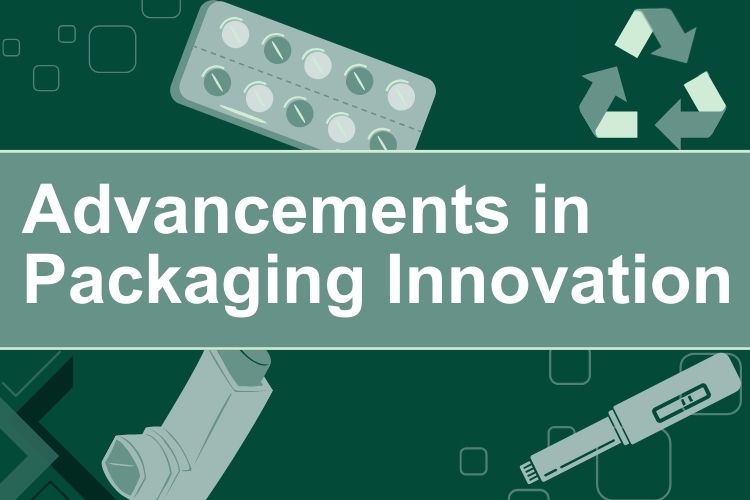In the pharmaceutical industry, packaging innovation is important in ensuring drug effectiveness, patient compliance, and environmental sustainability. CiPPPA members are working to be at the forefront of this innovation, focusing on three key areas: inhalers, blister packs, and injectables.
Inhalers
Inhalers are essential devices for millions of people with respiratory conditions. However, being composed of plastics, metals, and electronics has traditionally made them challenging to recycle. Recent innovations are addressing this issue:
- Modular Designs: New inhaler designs allow for easy disassembly, separating the plastic components from the metal canister and electronic parts. This modular approach facilitates recycling and reduces waste.
- Bio-based Plastics: Some manufacturers are experimenting with bio-based plastics for inhaler bodies, reducing reliance on fossil fuel-derived materials.
- Dose Counters: Advanced dose counters not only improve patient compliance but also ensure that inhalers are used to their full capacity before disposal, minimising waste.
Blister Packs
Blister packs are universal in pharmaceutical packaging, but their multi-material construction has posed recycling challenges. Innovation in this space includes:
- Mono-material Blisters: Development of all-plastic or all-aluminium blister packs that are easier to recycle while maintaining drug protection.
- Peelable Lidding: New lidding materials that can be easily separated from the blister, allowing for better sorting and recycling of components.
- Plant-based Films: Introduction of plant-based, biodegradable films for blister packaging, reducing environmental impact.
Injectables
Injectable medications, including vaccines, present unique packaging challenges due to stringent sterility requirements. However, progress is being made:
- Prefilled Syringes: Advancements in prefilled syringe technology reduce packaging waste and improve dosing accuracy.
- Recycled Materials: Incorporation of post-consumer recycled (PCR) plastics in secondary packaging for injectables, closing the loop on plastic waste.
- Smart Packaging: Integrate NFC tags and temperature sensors in injectable packaging to ensure proper storage and reduce spoilage.
CiPPPA Driving Innovation
- Collaborative Approach: By bringing together stakeholders across the pharmaceutical supply chain, CiPPPA members facilitate knowledge sharing and collaborative problem-solving.
- Regulatory Advocacy: CiPPPA members work towards improving regulations on using recycled materials in primary pharmaceutical packaging, paving the way for more sustainable solutions.
- Scaling Solutions: Through its action task forces, CiPPPA aims to scale promising innovations and create rapid downcycling pathways.
CiPPPA’s continued efforts in driving innovation and collaboration will be essential in realising a future where pharmaceutical packaging is not only effective and safe but also environmentally sustainable. By focusing on inhalers, blister packs, and injectables, CiPPPA is addressing some of the most challenging areas in pharmaceutical packaging. Through innovation and collaboration, the industry is moving closer to achieving circularity in primary pharmaceutical packaging, benefiting both patients and the planet.

